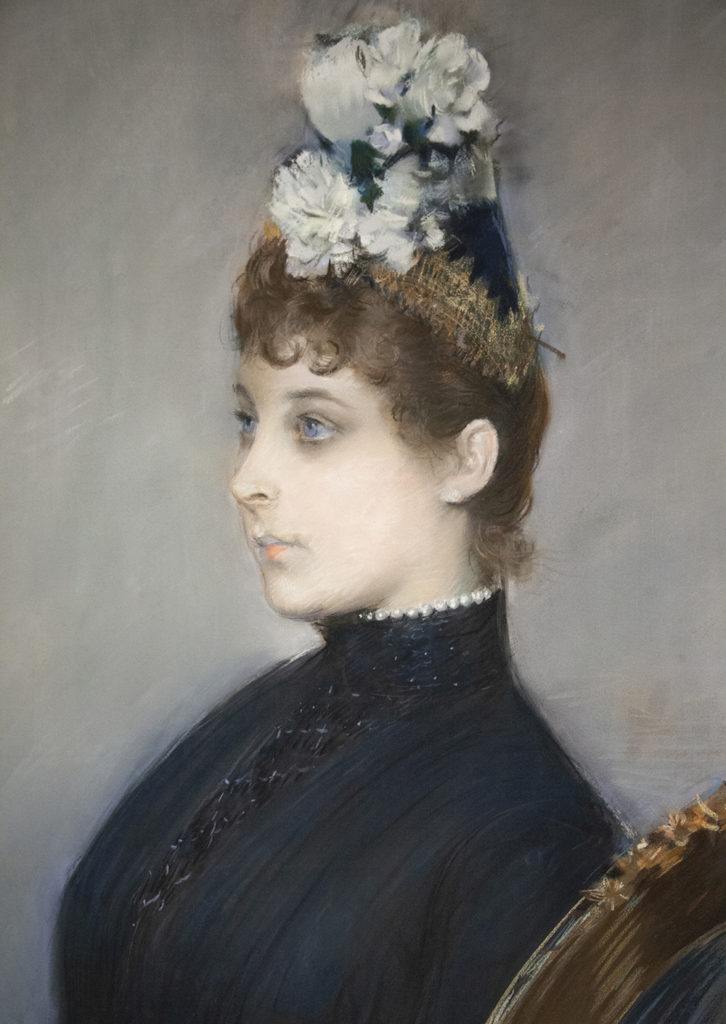I have been waiting for an exhibition like this since.…always!
It was a great opportunity to be able to see all these amazing pastel paintings beautifully arranged, all together in one single place. The “Casa Garriga Nogues”, in Barcelona. A selection of dozens of different works; Original pieces from artists of the last 2 centuries, from Renoir and Dégas to Millet, Mary Cassat, Paul Cesar Helleu or Boldini among others, and also, so diverse approaches to this technique, that I felt deeply moved and very emotional at the same time.
Since I am not a curator or an art historian I decided to include all the original texts of the exhibition. I think that it is a very interesting approach to this wonderful medium and a way of rethinking pastel.
Towards the mid 18thcentury, in a friendly comedy of the time – Le Retour de l´ombre de Molière by the Abbé of Voisenon- a character asks himself:
Do you believe that Michael Angelo or a Rafael a Titian or a Veronese should situate the works of a pastel painter in an immortal place?
Our gaze today is accustomed to all audacities, all the liberties, all the carefree mixtures of techniques and materials, and we only see the pastel as a medium like any other; neither more or less legitimate than tempera, oil, or watercolor.
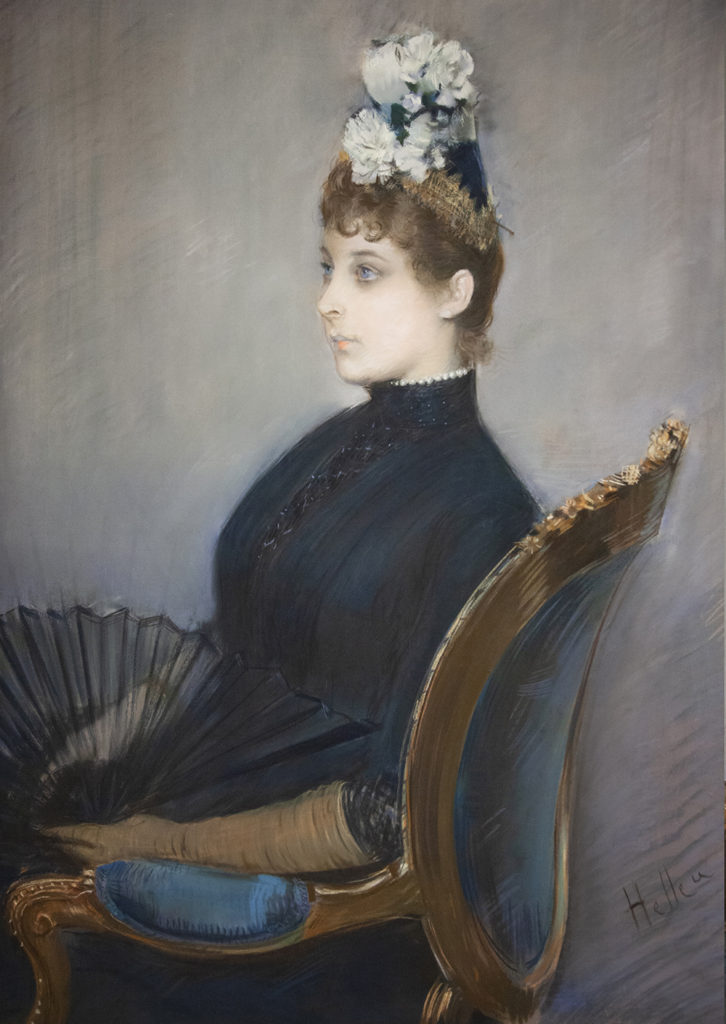
Paul-César Helleu, “Portrait de Mathilde Sée”, 1886, ©photo by Bogra art
We believe the decision to turn to one technique or another is determined by the artist´s free will forgetting much too quickly that a hierarchy of techniques existed –and still exist, if not to a lesser degree- much like a hierarchy of themes also existed for a long time. The entire history of pastel is profoundly marked by that lineage that determines both our judgment and the artist´s decision to utilize this medium, or not.
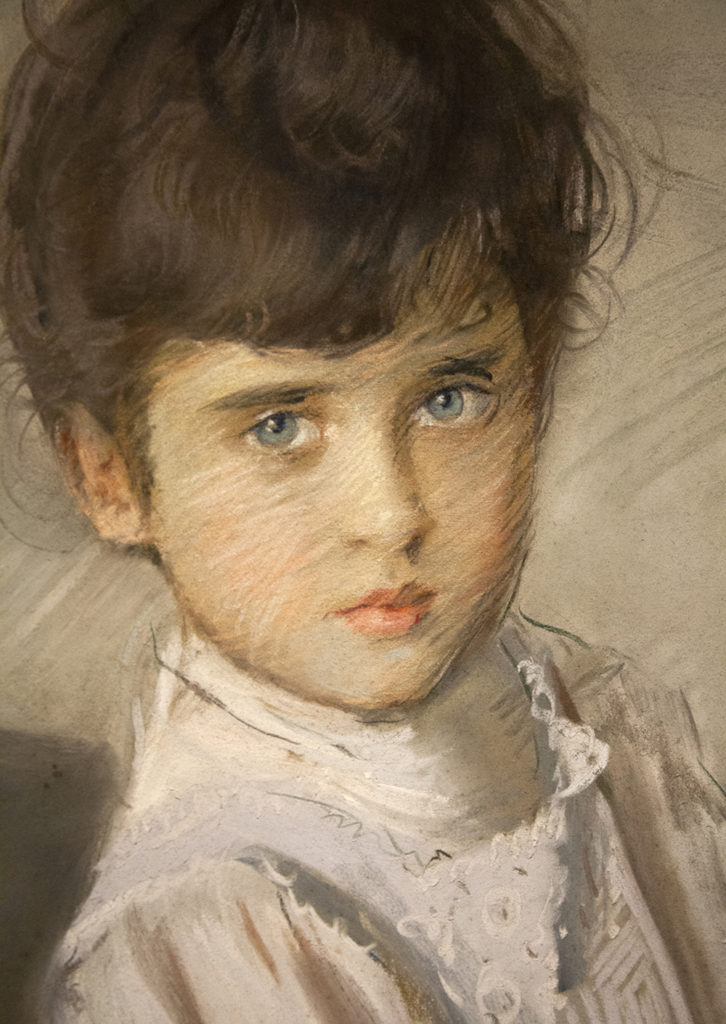
Paul-César Helleu, “Hellen Helleu” Detail, 1893 ©photo by Bogra art studio, 2019
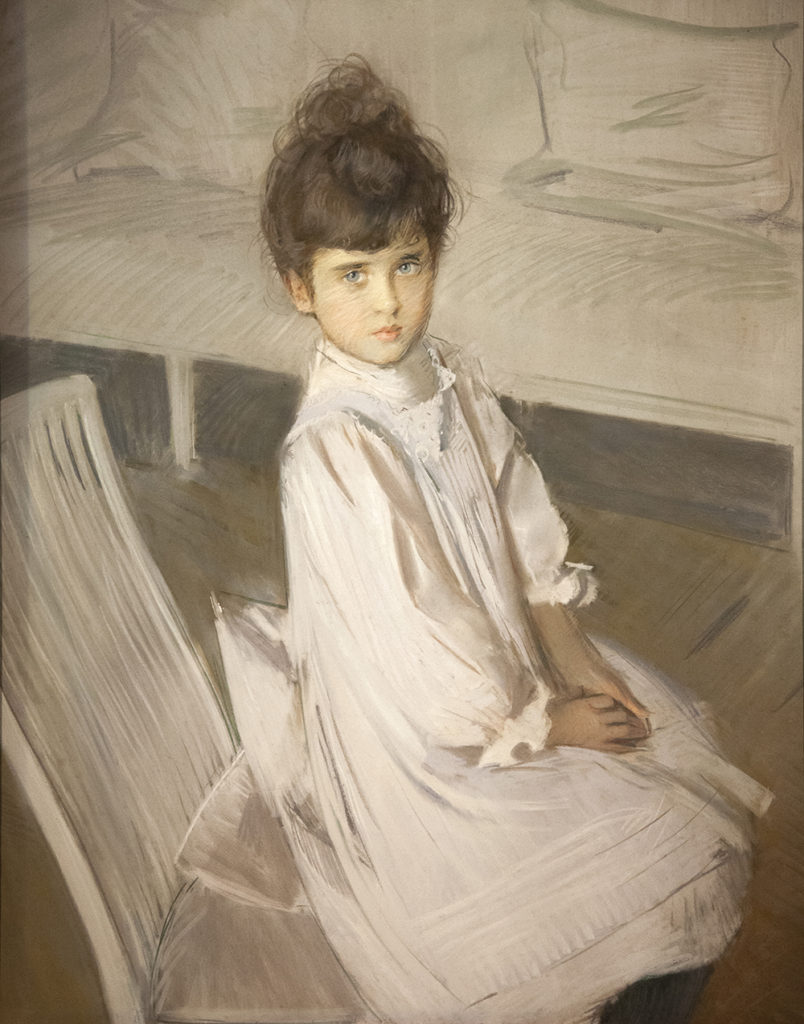
Paul-César Helleu, “Hellen Helleu”, 1893 ©photo by Bogra art studio, 2019
Thus, this exhibition aims to analyze pastel´s place versus the venerable oil painting, as well the reasons that led several artists from the 19thand 20thcenturies to rely on this medium and champion it. Without attempting to be exhaustive, but with an international perspective, the show highlights the main eras and top figures of the “renaissance” of the pastel in the first modern age: a period that converted this technique into an art form of its own.
Philippe Saunier. Exhibition curator.
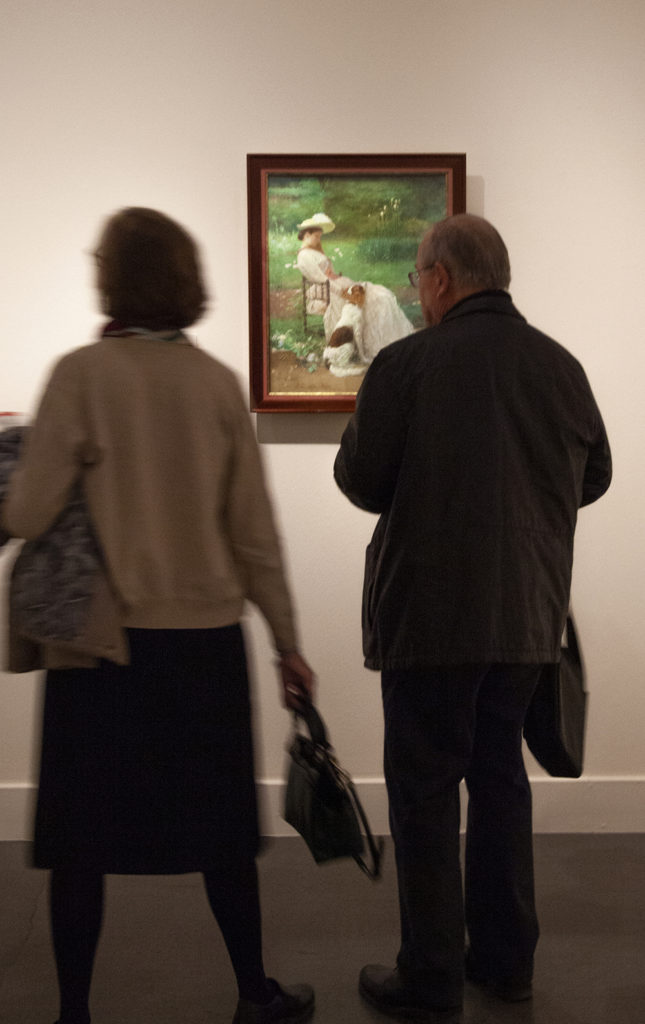
Pastel painting exhibition, Charles Léandre “La femme au chien”, 1889, photo by ©photo by Bogra art studio, 2019
A Feminine Art Form?
In our collective consciousness, pastel is an art form intrinsically and somewhat hastily associated to the work of women artists. In fact, the practice of Pastel attracted several female creators from the 18th century onward, with Rosalba Carriera at the helm, in part because it would be difficult for them to prevail in the dominant disciplines. Instead, Pastel would be considered an apt choice as it is a less expensive and complex medium tan others considered as “major”.
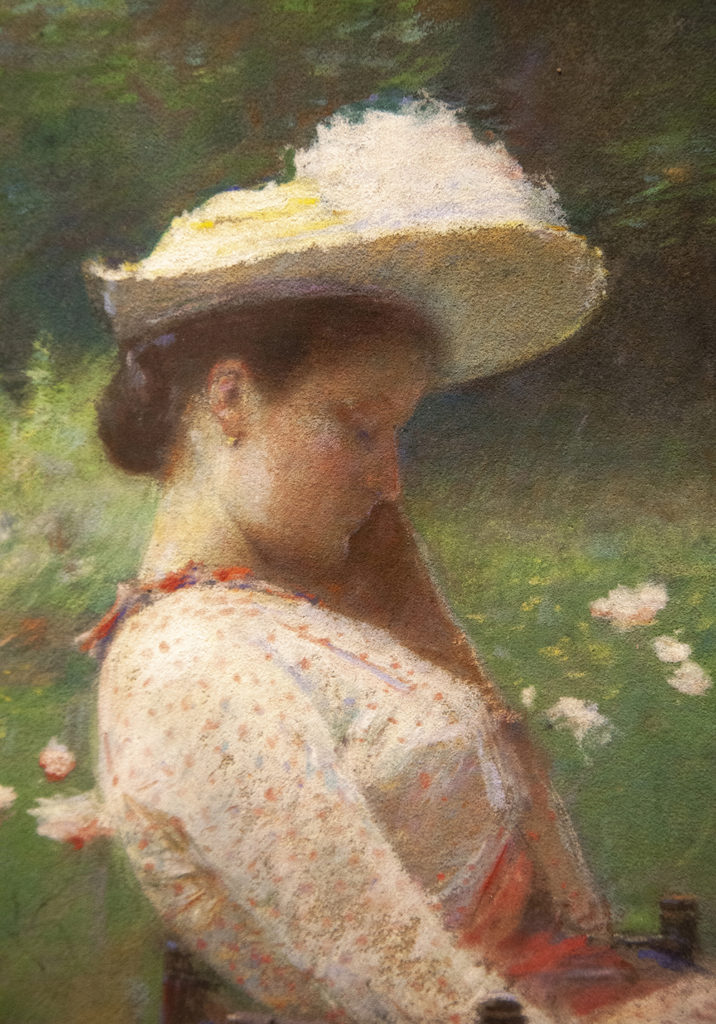
Charles Léandre “La femme au chien”, detail, 1889, ©photo by Bogra art studio, 2019
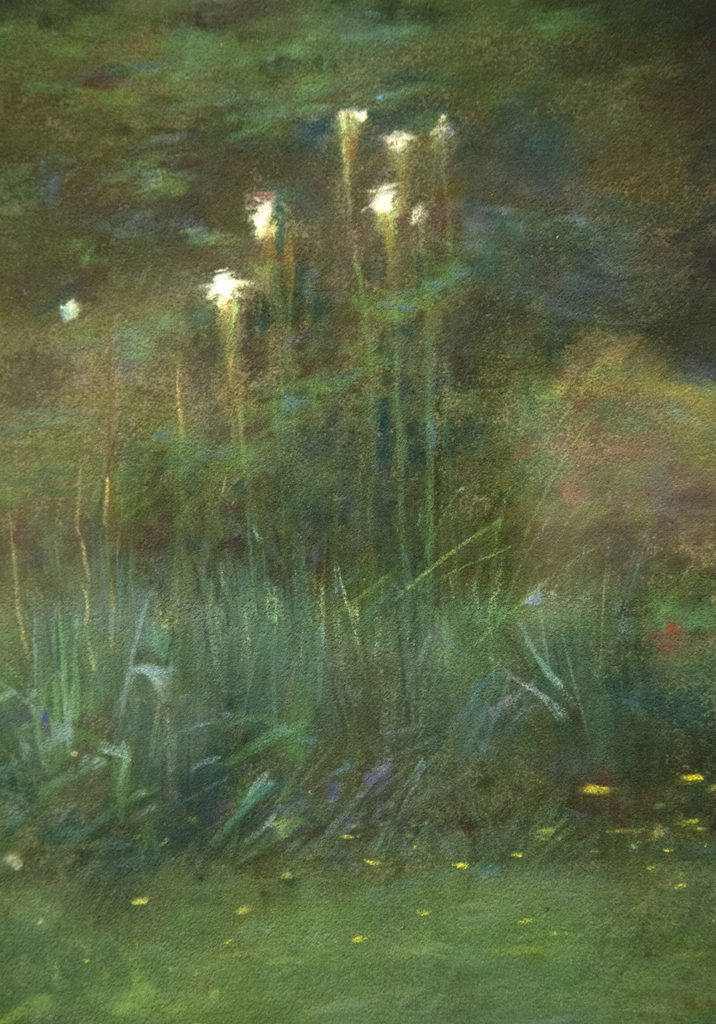
Charles Léandre “La femme au chien”, 1889, ©photo by Bogra art studio, 2019
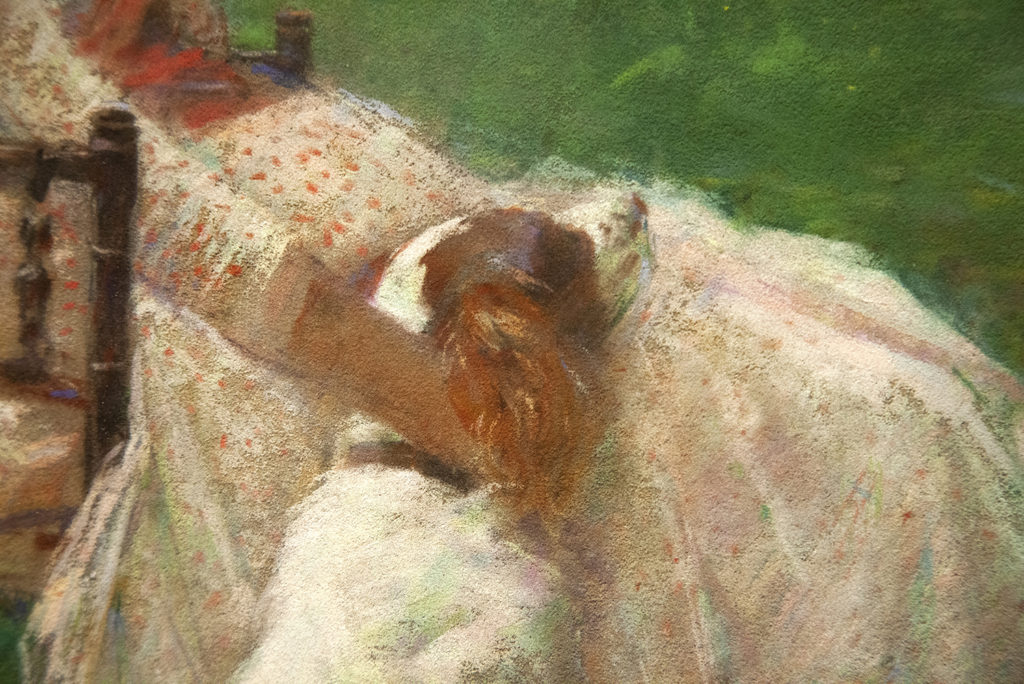
Charles Léandre “La femme au chien” detail, 1889, ©photo by Bogra art studio, 2019
Without abstaining from the practice of oil painting, mane women have exceptional careers as pastel artists: Belgian artist Berthe Art participated in the founding of the Belgian Circle of Watercolor and Pastel Artists; her compatriot Louise de Hem achieved a Gold Medal at the 1901 Paris Salon; for her part, American artist Mary Cassat son comprehended the value of this medium; her pastels, with their vigorous strokes and audacious colors, modernized the genre of portraiture and the motif of maternity which is recurrent in her oeuvre.
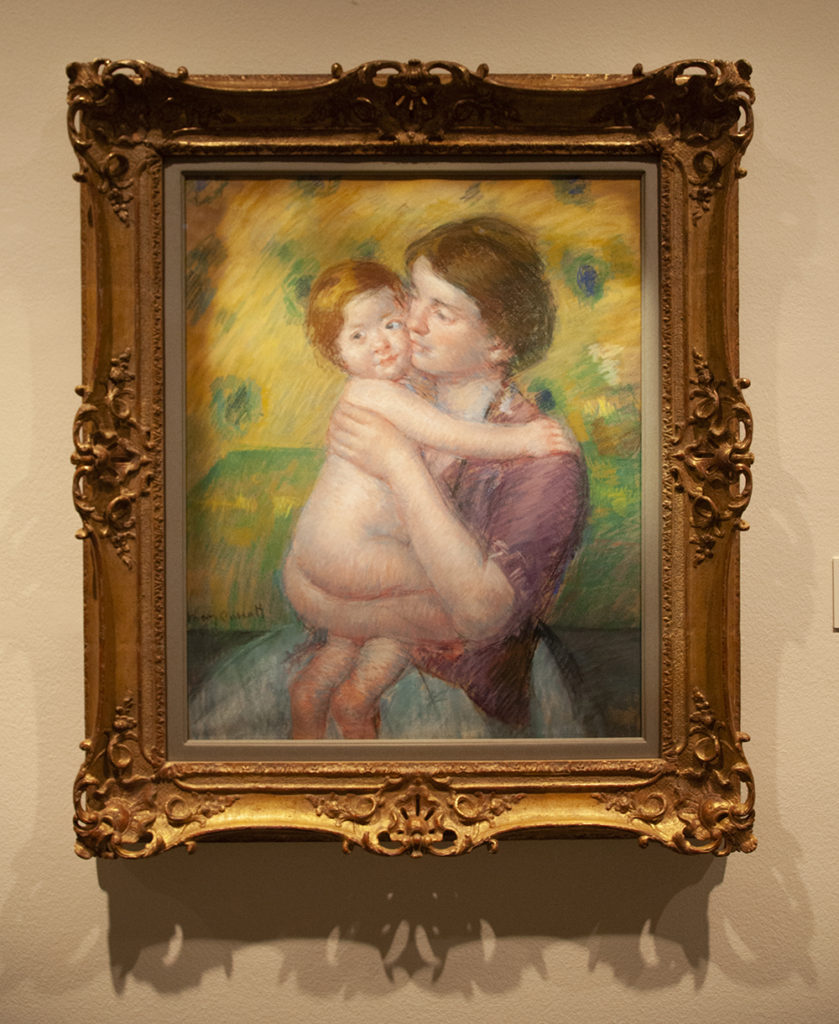
Mary Cassat, “Mother and son” 1900-1914 ©photo by Bogra art studio, 2019
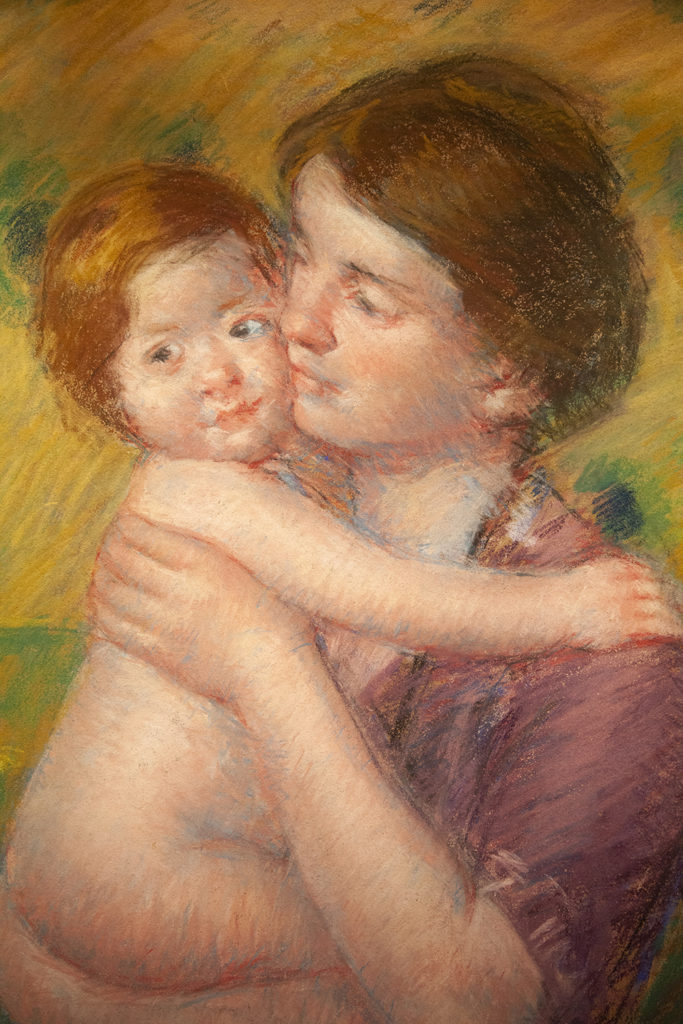
Mary Cassat, “Mother and son”, detail ©photo by Bogra art studio, 2019
During much time, resorting to pastel might have passed as a default choice until a great resurgence of the technique occurred in 1880. Nevertheless, the power of prejudice would force it to remain a refuge for conventional and pleasant themes throughout the entire century, one in which women are granted a role opposite to that of the creator: the model.
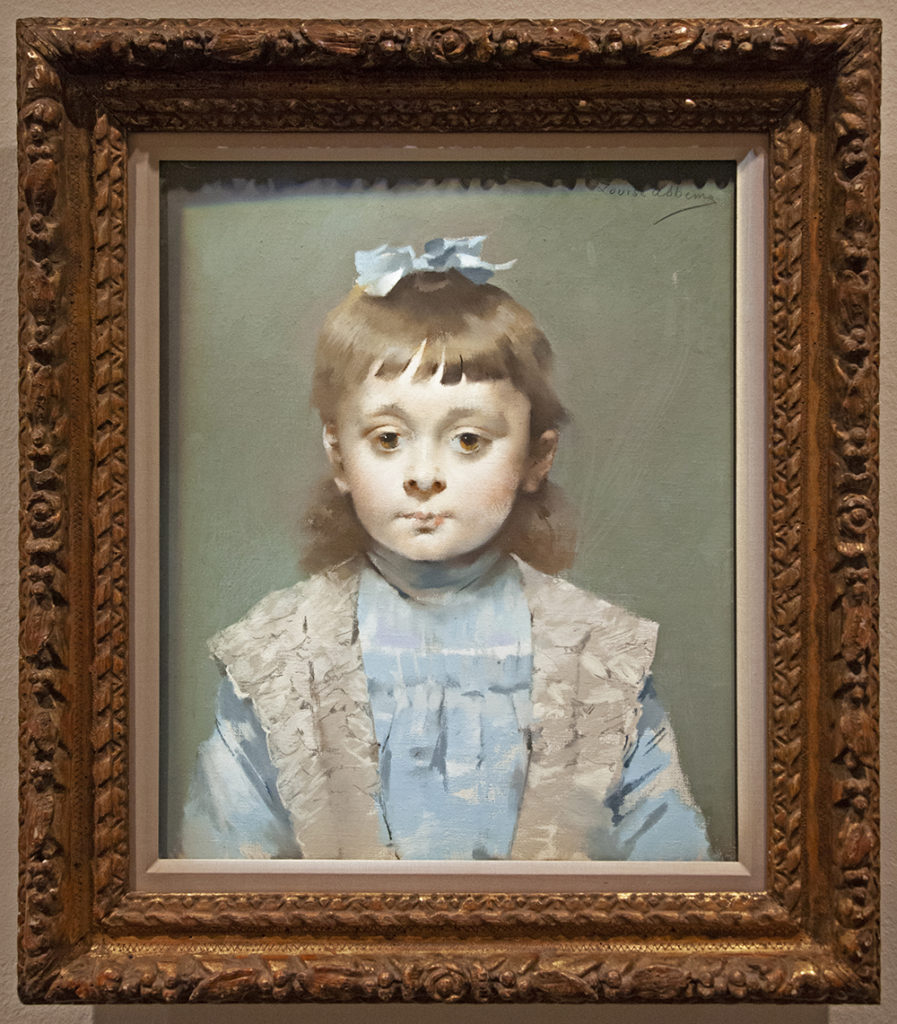
Louise Abbema, “Portrait d´une fillette au ruban bleu” 1885, ©photo by Bogra art studio, 2019
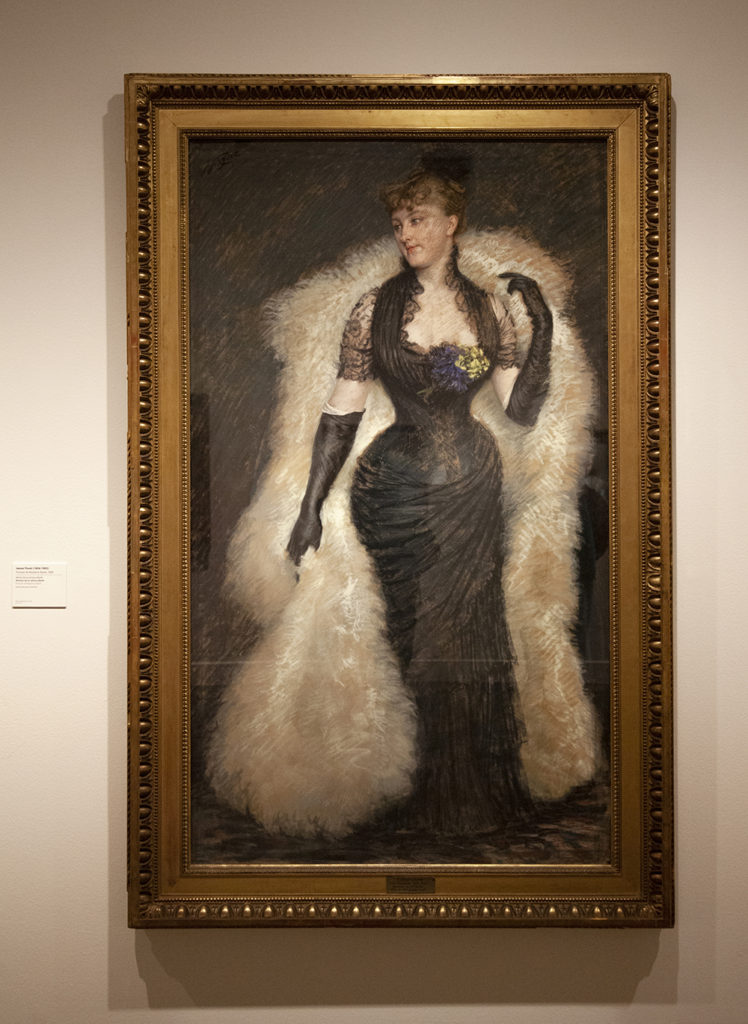
James Tissot, Portrait of Madame Baele, 1880, photo by ©photo by Bogra art studio, 2019
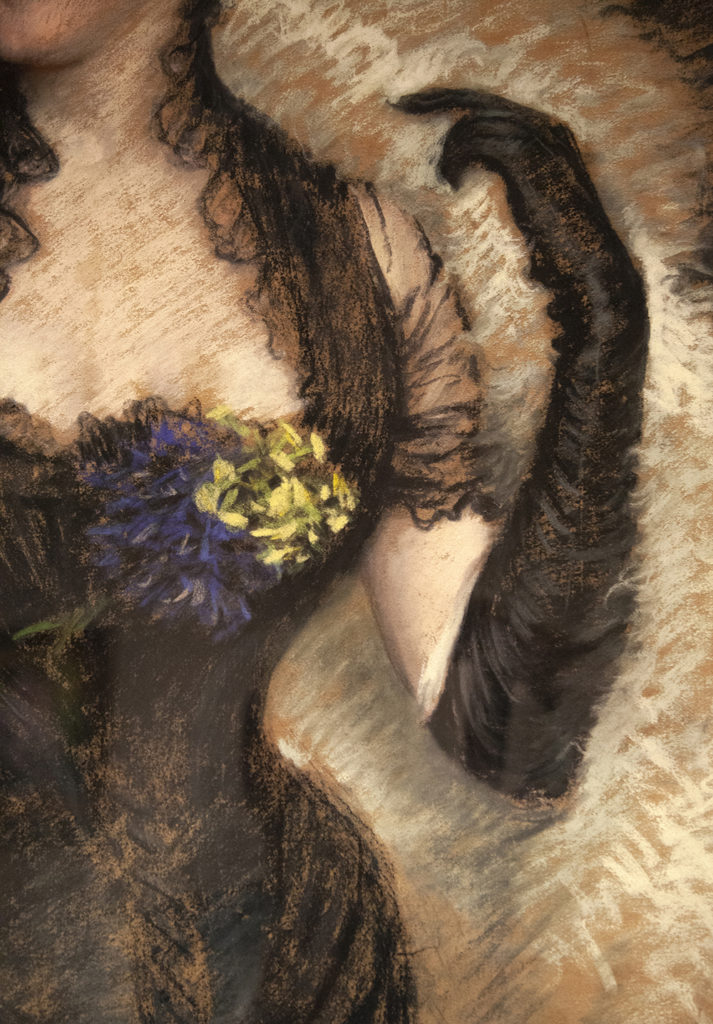
James Tissot, Portrait of Madame Baele (detail), The renewal of Pastel, photo by ©photo by Bogra art studio, 2019
At the time, depictions of women proliferated in which the leisurely nature of their occupations (as can be seen in The Woman with the Dog by Charles Léandre or in The Black Catby Louise de Hem) rival elegant poses and luxurious garments used by the bourgeoisie to emulate an idealized nobility.
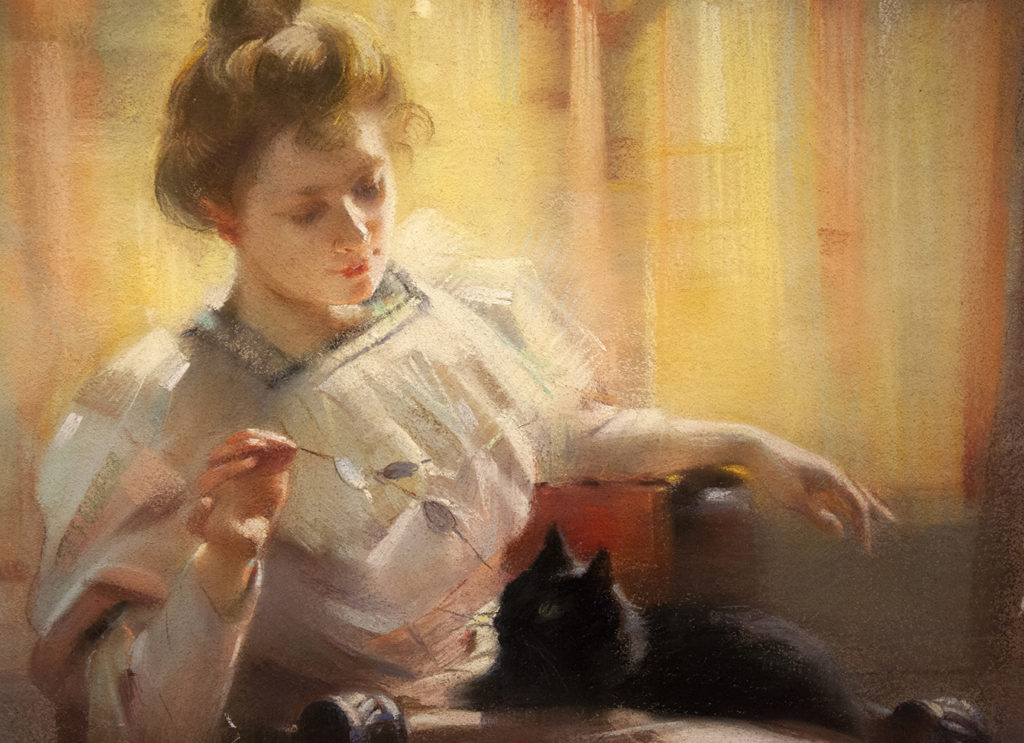
Louise de Hem 1866-1922, “Le chat noir” detail 1902, ©photo by Bogra art studio, 2019
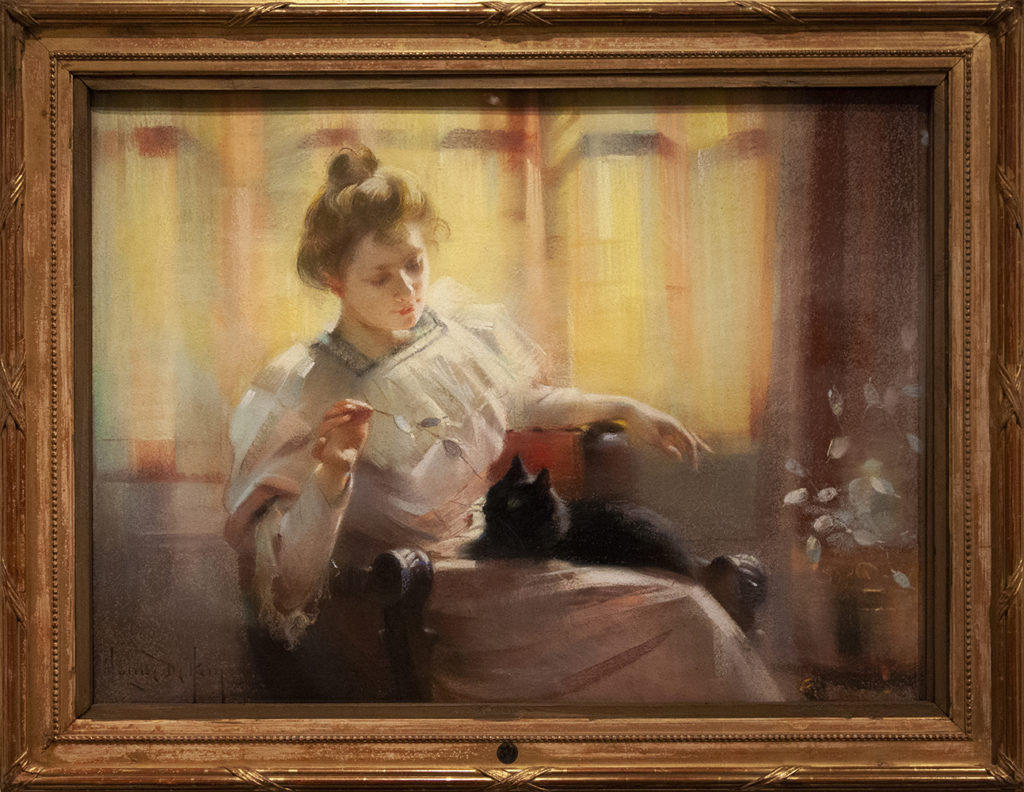
“Pastel painting exhibition”, Louise de Hem, “Le chat noir” detail 1902, ©photo by Bogra 2019
To be continued…

